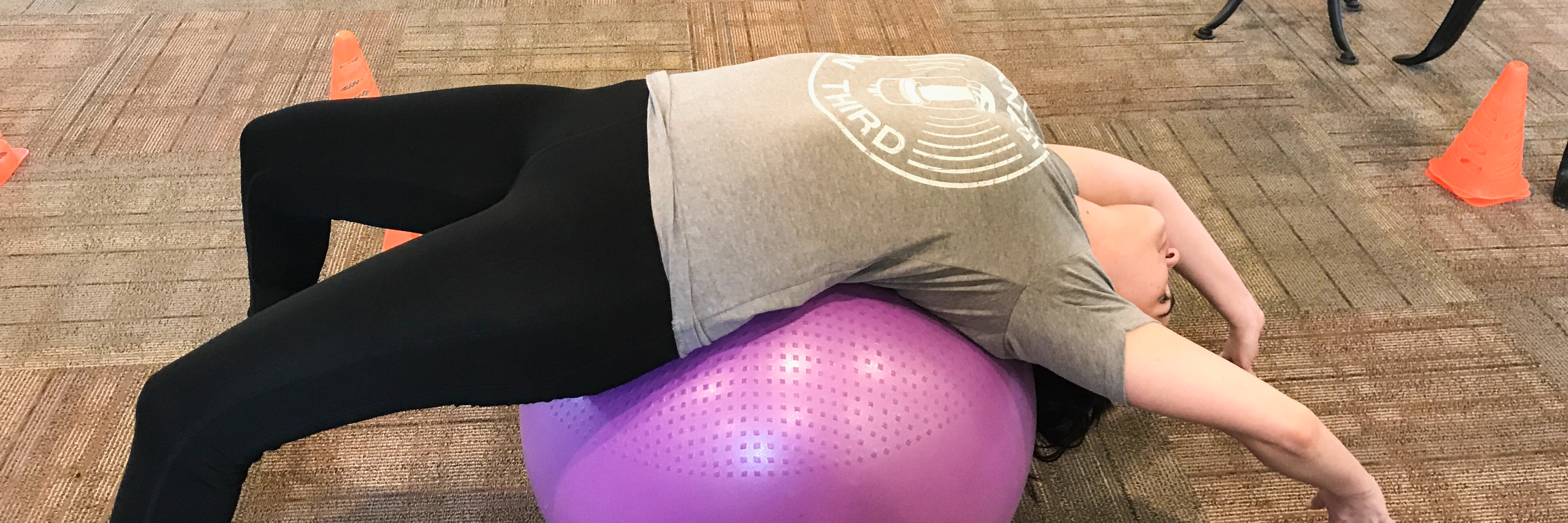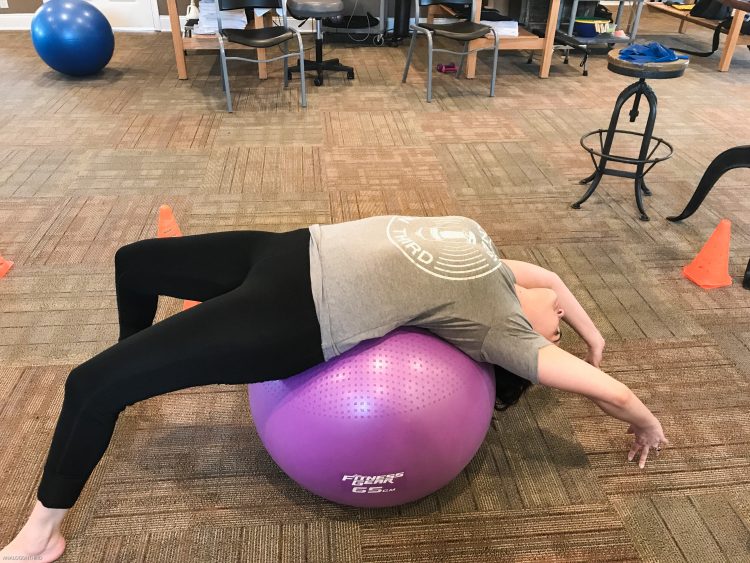Editor’s note: The following is based on an individual’s experience and shouldn’t be taken as medical advice. Please consult your doctor before going on or off medication.
The confusion on my face was apparent when my nurse, Marilyn, at the Center for Endometriosis Care in Atlanta, Georgia finished up my surgery consult by handing me a prescription for physical therapy.
Physical therapy?
I always associated physical therapy with surgeries or injuries to extremities – rehabbing shoulders, knees, hips after repairs or replacements. But, never did I think physical therapy would be prescribed post-operatively from laparoscopic excision of endometriosis. I left my consultation with prescriptions for physical therapy and vaginal valium suppositories.
Yes, you read that correctly: vaginal valium.
When I asked Nurse Marilyn why, she explained treating endometriosis and pelvic pain is more than just pain pills and surgery – that a patient must build up what gets broken down. It made so much sense, yet after a more than a decade of dealing with endometriosis and its various treatments, never once did any of my other physicians suggest physical therapy, even after my hysterectomy.
One of my chief complaints in my consultation with Dr. Kongoasa at the CEC was pain from what I assumed were adhesions (scar tissue) from previous surgeries, which is common. It turned out my pain was caused by both endometriosis and adhesions which were both treatable with surgery and physical therapy. Pelvic floor physical therapy was my missing link to healing from surgery and managing pelvic pain from pesky adhesions, endometriosis, dyspareunia (painful intercourse) and interstitial cystitis (painful bladder syndrome).
What I mean by “missing link” is I wasn’t aware of physical therapy as a treatment option until I visited a specialist, and I assume there are many other women out there who aren’t aware of it either. It’s available and a life-changer, so if you’re having or have had abdominal surgeries like a hysterectomy, laparoscopic procedure, C-section or appendectomy, chronic illness like IBS, IBD, sexual dysfunction or pelvic dysfunction, pelvic floor therapy may be beneficial to your recovery or symptom management.
Marilyn answered my question. However, having a chronic illness taught me to always conduct some internet research of my own to be fully aware of my options. I learned that the pelvic floor muscle becomes weak from factors like childbirth, trauma, surgery and disease which causes urinary and fecal incontinence. For endometriosis patients like myself, urgency and frequency of urination and defecation and pelvic pain lessened my quality of life. Also, post-operatively, I wanted to prevent further complications caused by adhesions.
Plus, I had no idea pelvic floor therapy could help with pelvic pain and painful intercourse by strengthening those muscles. On the first day of therapy, I had no idea how weak my pelvic floor actually was, which could be the case for other women as well. We think we’re functioning at capacity when, in fact, we aren’t.
What to expect.
Types of pelvic floor therapy vary depending on various factors like condition, severity, the physical shape the patient is in, etc… I chose a female physical therapist with a family connection – Kelly Smith Knowles, MSPT with Impact Physical Therapy in Snead, Alabama. Since the area being treated is the pelvis, the treatment can be personal, so choose a therapist with whom you’re comfortable.
My therapy started with stretches designed to loosen up my abdominal muscles and treat and prevent adhesions from forming. Along with stretching, Kelly taught me how to do a proper Kegel.
Ladies, we may think we’re doing them correctly, but trust me when I tell you they are way more involved than you may think!
Once I mastered the Kegel, we incorporated strength and conditioning exercises like leg lifts, squats, wall-sits and leg presses all while Kegeling coupled with functional pattern movements. Each therapy session winds down with stretching and concludes with a glorious “stim” (electrical stimulation interferential current) session, in which Kelly applies electrodes connected to a sticky pad to my abdomen or back—depending on which is more sore. Kelly explained that the purpose of the stim is to override pain sensors which, in turn, means soreness of the muscles worked should be minimal. Not to mention, this feels like a nice, electric massage! She also explained that treatment depends on the severity of the condition, surgery, etc.
Luckily, I was in moderately good shape, so we started with Kegels and progressed to core strengthening exercises, and I was able to continue my therapy with Kelly who is a general practitioner with a basic knowledge of pelvic floor therapy. If her assessment proved I needed more extensive care, she would have referred me to a physical therapist who specialized in more invasive treatment and utilized specialized equipment – including weighted therapy cones and internal stimulation. This may seem unsavory, but if the muscles don’t work, it’s hard for a patient to step right into the core strengthening exercises. These treatments prep the body to work on its own and helps those muscles to “wake up” as Kelly said. It turns out that the vaginal valium suppositories were for this type of therapy, just in case I needed the more intensive treatment.
Results.
My excision surgery was on May 12 and I’m halfway done with my therapy sessions. So far, my results have been astounding. My personal goals were to strengthen my pelvic floor and rectum since they were damaged from endometriosis and adhesions. This has changed my life. My husband and I took a road trip with minimal bathroom stops, all because my ability to “hold it” has increased exponentially. Before, we always had at least one stressful, urgent situation in which I was usually in the passenger seat, hysterical and in agonizing pain desperate for the nearest gas station bathroom, and he in the driver’s seat needing to stay calm for the both of us. Now, I don’t have to pack a separate bag of extra clothes and underwear for those “what if’s.” That alone has improved my quality of life.
Outcomes for every patient vary, but core strength and functional mobility (being able to move like our bodies are designed to without physical restrictions) are the most common goals. Common sense factors like actually doing the homework the therapist assigns and attending therapy sessions regularly are necessary for improvement. You have to be willing to do the work. Pelvic floor therapy is no cake walk. It’s grueling and painful. Imagine heading back to gym just two weeks after having surgery which is essentially what I did, except under the eye of a trained medical professional.
This summer, I was fortunate enough to work a reduced load from home so I could focus on my therapy. Most afternoons after my sessions result in lots of recliner, muscle relaxer, heating pad and Hulu time. The biggest challenge I’ve faced so far is that it’s a little difficult for me to use the bathroom because my muscles to do that are sore, but that’s nothing extra strength ibuprofen can’t help.
Ask for it!
One thing anyone with chronic illness knows is she has to advocate for herself. And the type of care she can receive, in large part, depends on her researching it and requesting it. I wish I would have known about pelvic floor therapy – especially after my hysterectomy in 2011, but it was never offered as an option.
If you struggle with pelvic pain, bladder dysfunction, bowel dysfunction, painful intercourse or sexual dysfunction and you think pelvic floor therapy could help you, I urge you to look into it. There is a way to stop that little trickle of tinkle when you laugh, or hold it longer when you aren’t quite feeling that public restroom. Talk to your doctor about it, and ask for a referral. You deserve to run at max capacity and conquer the world!
We want to hear your story. Become a Mighty contributor here.


